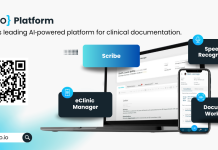Ben Riley, Director of Aventius, examines more on digital transformation in the NHS
In part two, we quickly looked at the NPfIT project in the early 2000s and why it failed. In this part three, we’ll now look at where digital transformation in the NHS is currently heading. As someone who has worked in the NHS in data and IT for over 15 years, I will look at how things are changing internally, but I will touch on the public viewpoint too and sprinkle in some of my opinions and speculation.
Public perspective
As I mentioned in the previous parts of this short series of articles, the public sees digital transformation mainly in the form of personal connectivity improvements, like viewing some of their medical records or ordering prescriptions from an app on their mobile. Like with most software, as clients, they don’t necessarily care how it’s all working internally, just that it’s doing what they need. Most people I speak to automatically assume that the whole NHS uses a single computer system and are very surprised when I explain the reality.
Internal struggles
So, what is currently happening internally? As I was in the middle of drafting this article, something interesting was happening. You may have read about the plans that NHS England has to create a national patient database for the NHS and talk of the U.S. firm Palantir as a possible provider of this database (see here for an article in the Guardian); apparently, this has now been confirmed that Palantir will provide a ‘Federated Data Platform’ that will form some kind of national patient database.
This costs around £330 million, which seems small compared to the billions spent during the NPfIT project. The details on exactly what and how it will work are still unclear, but I’ll keep an eye on it. It seems like the NHS will have to take what Palantir comes up with; this seems a bit like NPfIT all over again, at least to me.
FDP
Where I get confused is that there already is a kind of national patient database called the NHS National Care Record service (see here for more) or more commonly known as the ‘spine’ within the NHS data and IT circles. This is a remnant of the NPfIT, as mentioned in the earlier project above, and apart from the upgrades of network architecture that happened at the time, this is pretty much all that remains of the project. I don’t think it’s been made especially clear what this FDP is and will do in detail, so my questions would be: how are these two similar patient databases going to work together, or will the FDP just replace the spine?
Flying blind?
With all this in mind, I guess the main question is, what exactly is the plan? There seems (or seemed) to be a big push to try and integrate all the disparate computer systems in the NHS rather than go down the path of building a large monolithic single database as they attempted with NPfIT.
In the previous part of this series, I dealt with the pros and cons of trying to integrate all the different systems across the NHS organisations. With this new FDP, we seem to be going in the opposite direction. The natural question is if the FDP will replace the ‘spine’, then why? If we’ve already got the spine, what additional benefits are we discussing here?
On the other hand, if it will be more like a new national PAS (Patient Administration System) or an EPR (Electronic Patient Record) system that could or would replace many hospitals’ ageing PAS systems, then why push for integration? As this would negate the need for it. I imagine this is probably somewhat confusing for anyone working in hospitals or the NHS in general, especially as many hospitals have been looking at purchasing expensive EPR systems to replace their old PAS systems.
In fact, many hospitals have already made significant investments in implementing EPR systems. It should be noted that these EPR systems and their implementation can run into many millions of pounds just for a single hospital. Imagine if you’ve just paid for one, and now this FDP comes along. If there is a cohesive vision somewhere, then it’s not clear what it is.
Digital transformation in the NHS: Fork in the road or end game?
To me, this seems like we might be nearing a fork in the road for NHS computer systems and digital transformation, at least from a high- level strategic viewpoint. Integration or monolithic patient database? Or maybe a combination of both? Now, we’re into the realm of speculation here.
Still, perhaps the plan in the short term is to work at implementing some level of integration of systems (as complex and unwieldy as that may be) whilst in the long term implementing some kind of national patient database that can be built upon. If so, why couldn’t this be done by expanding or building on the current spine database? I do not know; I’d imagine the cost wouldn’t be as high.
One thing seems clear to me: someone high up needs to define a clear vision of NHS data and digital transformation and communicate that to all the many organisations (especially hospitals) that make up the NHS, or we’ll likely be heading down a similar road to the one that we visited with NPfIT. So, if you’re reading this and you are that person, I think you need to let the rest of the NHS data and IT people know what the heck is going on before they spend precious funds on something that may soon not be needed.

This work is licensed under Creative Commons Attribution-NonCommercial-NoDerivatives 4.0 International.











